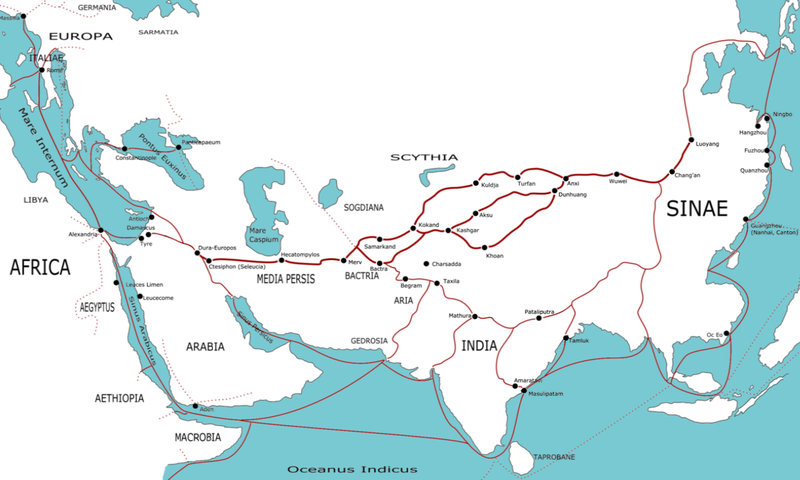It seems like everyone today is talking about the global economy, and how we are all connected by the products that we consume. When did this global economy come about though? The first roots of it can be traced back over 2,000 years, to the silk road. 2,000 years ago there weren't things such as email, telephone, and large commercial cargo ships. Then how could it be possible to transport good from Asia across Europe and vise versa? Well, first of all merchants didn't travel the whole length of the road. They had their small trade routes and through trading with other merchants goods would eventually end up across the continent.
Traveling along the silk road could be difficult and take a lot of time without vehicles. There were three main modes of transportation back then: by foot, by horse, and by wagon. By wagon was the slowest of all three modes. A wagon could only go about 20 miles in a day but could carry by far the largest amounts of goods. The next fastest was by horse, but it was only fast if the horses were switched every few hours because the horses would be come tired and need to be fed. The fastest mode of transportation was walking; a fast walker could easily cover 25 miles in a day.
To me it seems unimaginable that goods could travel so far back then with the limited transportation and communication technologies. Although these goods were traveling much further than their makers realized, even before the silk road. The silk road just enhanced the capabilities and speed of this travel. The silk road was just the first of many economic advancements to a world economy.
Links:
http://www.britannica.com/bps/additionalcontent/18/38697701/Modes-of-Travel
Photo Credits:




